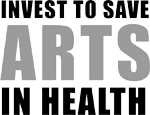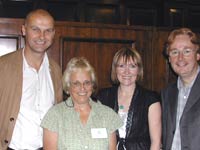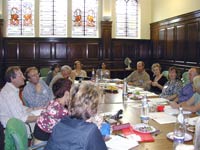Francois Matarasso
In July 2005 Arts for Health invited leading cultural research consultant Francois Matarasso to facilitate a group exploration of evaluation issues and methodologies. The invited participants to this discussion group included artists, academics/researchers and health professionals. The following are summary notes.
What evaluation needs to do:
- Needs to try and understand and classify what has been done
- arts and health is not well mapped
- self evaluation should be the norm for arts projects part of good practice
- My tip would be not to underestimate the value of questionnaires because most people think they don’t like them and that they are not very professional things to use but in the right circumstances they have some real advantages, one of which is that they can be very truthful as you are not standing there and asking them
- Unless you assess the extent to which you are achieving your objectives you have set, you can’t learn from your experience.
- One artist “felt defensive as we have to justify the work of art and its values”
- It was felt that “If we had more equal discussions of good health – between art and health, we could discover shared values and common ground”
- Rather than looking at what the arts can do or their role in the remedial sense of removing ill health, it may be more fruitful to look at their positive role in relation to good health
- With regard to arts and health partnerships it was seen as being “important to measure how those relationships are going, in order to build on them next time round”.
- What the sector needs are projects that are “written up with a very clear methodology” this would be providing something useful for the sector.
- There are certain basic things about integrity, about rigour, about clarity that a simple evaluation which stand up to those basic principles may be absolutely what's required in the context of demonstrating to a manager that this has been worthwhile.
Values underpinning arts and health:
Values in the arts field, health field and economic field are very different.
To sum up peoples views, it’s about people. Art and healthcare are about people’s quality of life. There appear to be three strands to it:
- Being fully alive and human.
Fun/pleasure/risk. Quality of life at that precise moment. - Communicating.
Expressing your views, ideas, feelings. Do it in was that are different. Deniable ways as in the example Andrea gave about palliative care. Safe ways, non verbal ways. It becomes about being heard. - Make sure people have the capacity to make choices.
Empowerment. Often working with people who have less power.
The values which underpin the three strands include:
- Value for justice and equity
- Community and connection. Communicating, making connections internally and externally and connecting with others.
Values we hold which make us view a person. Creative entity. Stewardship value. Value people for who they are. Protecting them as a resource. Can’t waste their time. Do stuff they will gain from. Look after nurture the nature in people
Issues:
The issue of what guidance for evaluation was used was raised and people felt that this was not always clear:
“I'm constantly on the internet looking at toolboxes and case studies”
“I have read that document and then got someone in to do the work!”
One position held that :
“There are projects that cannot be evaluated, and should not be evaluated because to evaluate them may destroy what it is that is happening. A lot of projects that we are involved in are fundamentally based on notions of trust, on notions of intimacy, on notions of relationship which will be completely destroyed like a house of cards if you then produce a questionnaire and say now fill this in.
Some delegates held a counter position:
“I don’t actually agree that there are projects and activities that are so sensitive they can’t be evaluated, it think that’s the path to abuse, and particularly with vulnerable people. I think its an issue about how they are evaluated, it doesn’t need questionnaires or external observers who don’t have relationships with people.
The issue of what constituted ‘acceptable evidence’ was discussed:
“I want to talk about is the phrase acceptable evidence. It has a double edged kind of resonance. Its not only acceptable to the audience we are looking for, but also it should be acceptable to people who took part in the projects”

 Clive Parkinson, Carolyn Kagan, Amanda Kilroy and Francois Matarasso
Clive Parkinson, Carolyn Kagan, Amanda Kilroy and Francois Matarasso
 Discussion Group
Discussion Group
